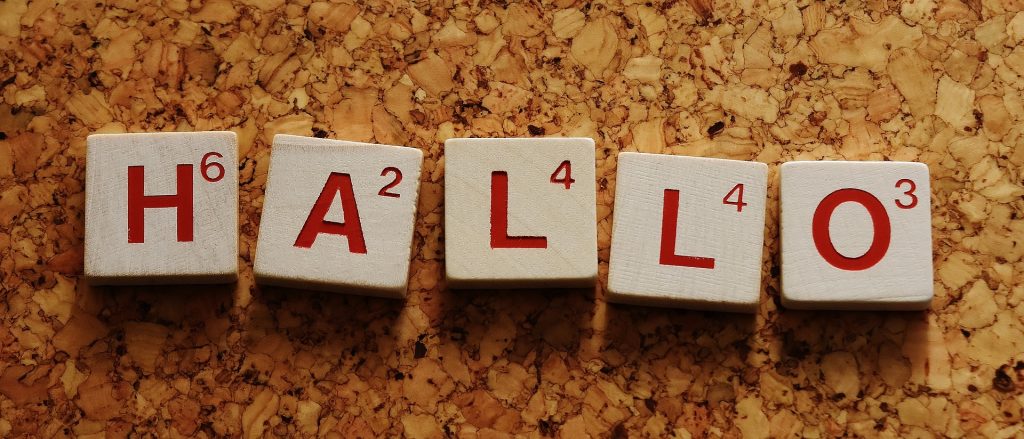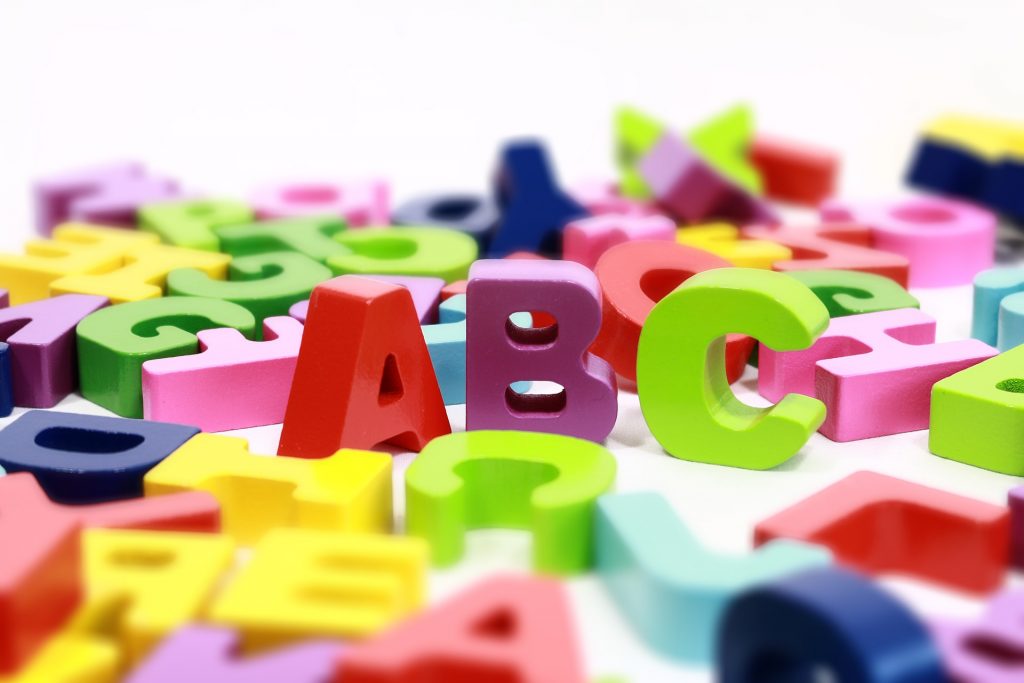Einheit 1.2 (online)

![]() Übung 1a. Listen to the dialogue and click on the correct answer based on what you hear.
Übung 1a. Listen to the dialogue and click on the correct answer based on what you hear.
![]() Übung 1b. Listen to the dialogue and click on the correct answer based on what you hear (True = Richtig and False = Falsch).
Übung 1b. Listen to the dialogue and click on the correct answer based on what you hear (True = Richtig and False = Falsch).
![]() Übung 1c. Listen to the dialogue.
Übung 1c. Listen to the dialogue.
Sie, du oder ihr?
The German language has three different words for “you”.
Sie (formal singular and plural) – commonly used among adults, with someone you don’t know (e.g., shopkeeper, drivers) or who functions in a professional role or position of authority (e.g., boss, doctor, police officer, flight attendant)
Wie heißen Sie? / Woher kommen Sie?
du (informal singular) – used with friends, family, children, pets, fellow students, longtime coworkers
Wie heißt du? / Woher kommst du?
ihr (informal plural) – this the plural form of “du” – used for example with several friends/family members/children at once (e.g., meeting several students at a party, a teacher talking to a group of younger students)
Wie heißt ihr? / Woher kommt ihr?
In general, German speakers use much more formal language when addressing each other than English speakers, especially among older people. It is quite common for many people who have been neighbours for years or coworkers in the same office to still address each other with “Frau Meier” or “Herr Berg” and use the “Sie-Form”.
If you are ever unsure whether to use the “du-Form” or the “Sie-Form” (especially in a professional context or when the other person is older or in a higher position of power), it is always safest to use “Sie” until the person to whom you are talking suggests that you use “du“.
![]() Übung 2. Match each picture with its corresponding pronoun.
Übung 2. Match each picture with its corresponding pronoun.

![]() Das Alphabet. Watch this video and practice as she teaches you the alphabet.
Das Alphabet. Watch this video and practice as she teaches you the alphabet.
All activities in this e-textbook require ä, ö, ü, and ß where necessary and you should learn how to spell words the way we present them. You also need to use ä, ö, ü, and ß when you write tasks and quizzes. If you do not know how to make an umlaut or Eszett (ß), please refer to this short article. Also please note that we try to always provide the special characters for you so that you can copy and paste them from the instructions. In the German-speaking countries, people usually only use the ae, oe, ue as mentioned in the video when they do a crossword puzzle. Otherwise, they use the umlaut.
![]() Was wissen Sie jetzt? Klicken Sie hier für “Online Practice” 1.2.
Was wissen Sie jetzt? Klicken Sie hier für “Online Practice” 1.2.
Extra Practice (optional):
![]() Das Alphabet
Das Alphabet
Here is a website that teaches you each letter individually. You can work through this throughout the semester or whenever you have an issue with a specific sound.
![]() Super Easy German
Super Easy German
Want even more detailed information about the German alphabet? This long video gives you so many examples and background information. The video is in German, but there are English subtitles;-)
![]() Easy German
Easy German
Here is a video that asks Germans on the streets of Berlin when they “duzen” or “siezen“.
![]() Nicos Weg
Nicos Weg
Throughout the semester we will use clips from “Nicos Weg” to help practice what we are learning in this course. Nicos Weg is a video series developed by Deutsche Welle. Feel free to use other parts of the series if you want to practice more. If you have trouble figuring out how to complete the exercises, please go to this link and scroll to “exercises” and read about how the activities are to be completed.
If you want extra practice on “introducing yourself”, watch the video here. Then click on “start” under the video and do the exercises.
Media Attributions
- hello © Alexas_Fotos is licensed under a Public Domain license
- headphones © IO-Images is licensed under a Public Domain license
- star © IO-Images is licensed under a Public Domain license
- alphabet © Gerd Altmann is licensed under a Public Domain license
- play © IO-Images is licensed under a Public Domain license
- check mark © janjf93 adapted by Solomon Hajramezan is licensed under a Public Domain license

